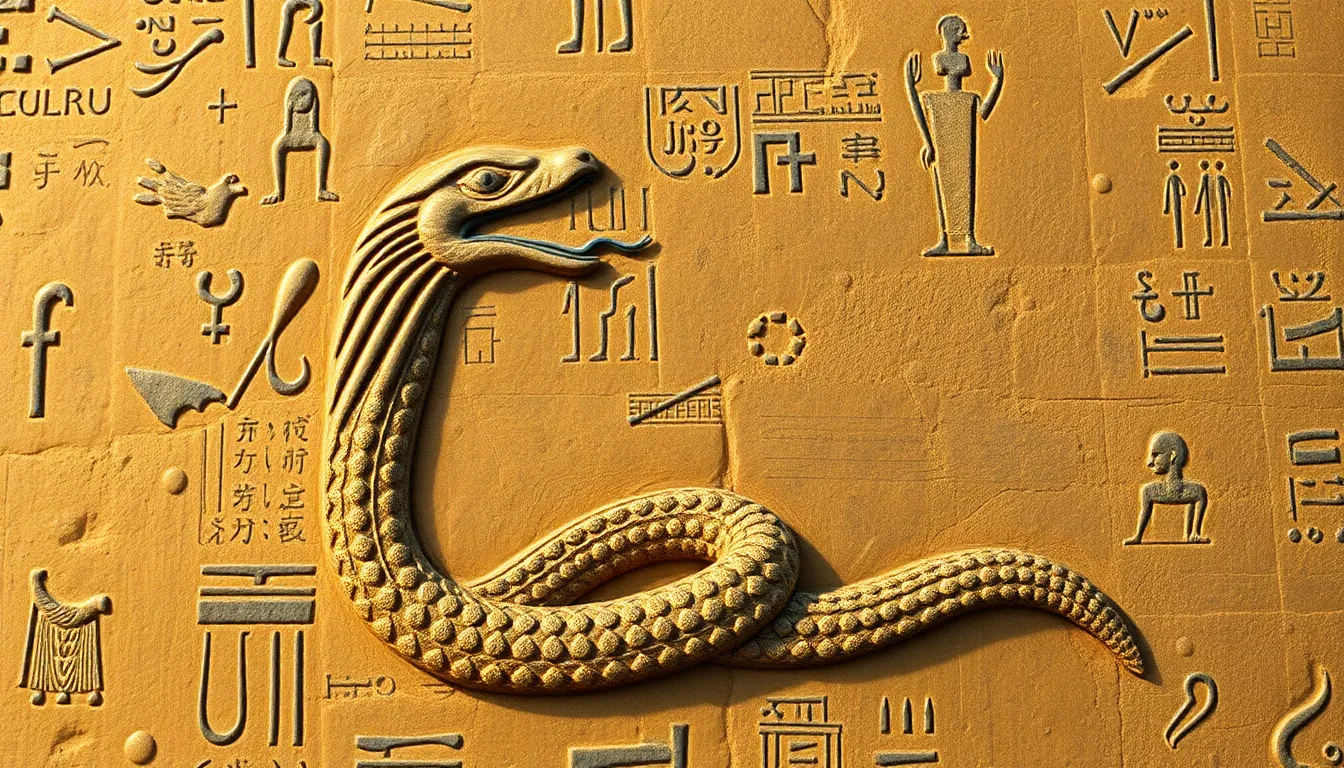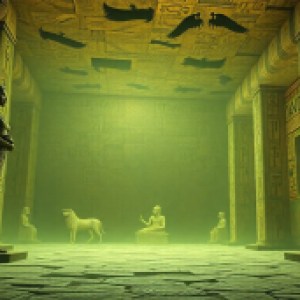The Symbolism of the Serpent in Egyptian Funerary Texts
I. Introduction
In ancient Egypt, funerary texts served as vital components of burial practices, offering guidance and protection for the deceased in their journey to the afterlife. These texts, ranging from the Pyramid Texts to the Coffin Texts, are rich with symbolism, revealing the beliefs and values of Egyptian culture. Among the most significant symbols featured in these texts is the serpent, a creature that embodies a complex array of meanings within ancient Egyptian mythology.
II. Historical Context of Serpent Imagery in Ancient Egypt
Serpents have been integral to Egyptian mythology, symbolizing both danger and protection. The imagery of serpents appears across various artifacts, tomb inscriptions, and art, reflecting their multifaceted roles in the spiritual landscape of ancient Egypt.
A. Overview of serpent representations in Egyptian mythology
Serpents were often seen as powerful beings, with their imagery representing various aspects of life, death, and the divine. They appeared in mythological narratives, embodying the duality of creation and destruction.
B. Serpent deities: Wadjet, Apophis, and others
- Wadjet: The protective goddess often depicted as a cobra, Wadjet symbolized royalty and was believed to safeguard the pharaoh.
- Apophis: A chaotic serpent representing darkness and disorder, Apophis was the nemesis of the sun god Ra, embodying the eternal struggle between chaos and order.
- Other deities: Other snake-like deities included Apep and Nehebkau, each contributing to the rich tapestry of serpent mythology.
C. The role of serpents in the afterlife beliefs
In the context of the afterlife, serpents were seen as both protectors and adversaries. They guarded the passage to the afterlife and were also involved in the judgment of souls, making their presence in funerary texts particularly significant.
III. The Serpent as a Guardian in Funerary Texts
Serpents were attributed with protective qualities, playing a crucial role in safeguarding the deceased during their journey through the afterlife.
A. Protective qualities attributed to serpents
Serpents were believed to possess the ability to ward off evil spirits and ensure safe passage to the afterlife. Their venomous nature was paradoxically seen as a form of protection against malevolent forces.
B. Examples of serpent imagery in tomb inscriptions and spells
Funerary spells often included references to serpents, highlighting their protective roles. For instance, inscriptions in tombs frequently depicted cobras encircling the deceased, serving as guardians against harm.
C. The function of serpents as guardians of the deceased
In many funerary texts, serpents were invoked to protect the deceased from threats in the afterlife, reinforcing their status as powerful guardians. The imagery of serpents was a reassurance of safety in the treacherous journey after death.
IV. The Dual Nature of Serpents: Life and Death
The symbolism of the serpent in Egyptian culture encapsulates the dualities of existence, particularly in relation to life and death.
A. The serpent’s association with regeneration and rebirth
Serpents are often linked to themes of regeneration, as their ability to shed their skin symbolizes renewal and the cyclical nature of life. This association made them powerful symbols in funerary contexts, where rebirth was a central theme.
B. The balance between danger and protection
The duality of serpents reflects a balance between danger and protection. While they could represent threats, they were also revered as protectors, demonstrating the complexities of their symbolism.
C. Symbolism of the serpent in the context of the afterlife journey
In the journey to the afterlife, the serpent’s dual nature was significant. It represented both the obstacles that the deceased might face and the protections available to them, emphasizing the importance of balance in their spiritual journey.
V. Serpent Symbolism in Specific Funerary Texts
Several key funerary texts illustrate the rich symbolism of serpents in ancient Egyptian beliefs.
A. Analysis of the Pyramid Texts and Coffin Texts
The Pyramid Texts are among the oldest religious texts in the world, containing spells that often invoke serpents for protection. Similarly, the Coffin Texts expand on these themes, incorporating serpent imagery and references to their protective qualities.
B. Case studies of notable inscriptions featuring serpents
- Pyramid Text 273: This text features a spell that calls upon the protective power of serpents to ensure the deceased’s safety.
- Coffin Text 148: This inscription depicts serpents encircling the tomb, symbolizing their role as guardians against chaos.
C. Interpretations of serpent symbolism in specific funerary contexts
Scholars have interpreted these inscriptions as reflections of the deep-seated beliefs about the afterlife and the protective nature of serpents, emphasizing their role in the spiritual journey.
VI. The Serpent as a Representation of Chaos and Order
Within the cosmology of ancient Egypt, serpents embody the tension between chaos and order, a fundamental theme explored in funerary texts.
A. The role of serpents in maintaining cosmic balance
Serpents were viewed as essential in maintaining order within the universe. Their presence in funerary texts often served as a reminder of the need for balance in life and death.
B. Serpents as representations of chaos (e.g., Apophis)
Apophis, as a personification of chaos, was constantly battling the forces of order represented by the sun god Ra. The struggle against Apophis was a recurring theme in funerary texts, highlighting the importance of overcoming chaos.
C. How funerary texts address the conflict between order and chaos
Funerary texts often included spells and invocations aimed at ensuring the triumph of order over chaos, utilizing serpent imagery to symbolize this ongoing conflict.
VII. Cultural Significance and Legacy of Serpent Symbolism
The symbolism of serpents in ancient Egypt has left a profound legacy, influencing subsequent cultures and beliefs.
A. The enduring impact on later Egyptian beliefs and practices
The protective and regenerative qualities of serpents continued to resonate in later Egyptian practices, where they were invoked for protection in various contexts.
B. Comparisons with serpent symbolism in other cultures
Many cultures worldwide regard serpents as symbols of rebirth and protection, including in Greek and Mesoamerican mythologies, showcasing the universal themes associated with these creatures.
C. Modern interpretations and relevance of serpent imagery
Today, serpent imagery persists in various forms, from art to literature, symbolizing transformation and duality, echoing the ancient Egyptian understanding of these powerful symbols.
VIII. Conclusion
The multifaceted symbolism of serpents in Egyptian funerary texts highlights their role as protectors, representations of chaos and order, and symbols of regeneration. Understanding these beliefs provides insight into the rich spiritual landscape of ancient Egypt and the complex nature of life and death. The legacy of serpent symbolism continues to resonate today, reminding us of the enduring power of these ancient symbols in contemporary contexts.




